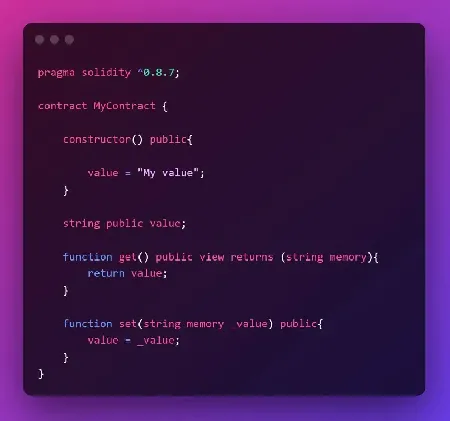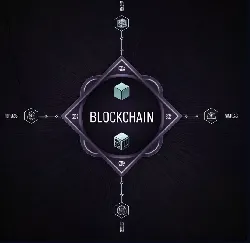What Is Ethereum? A Beginner’s Guide to the World’s Leading Smart Contract Platform

Ethereum is more than just a cryptocurrency,it's a decentralized blockchain platform that powers thousands of applications across the globe. Designed to support smart contracts and decentralized apps (dApps), Ethereum has become the backbone of the Web3 revolution.
Understanding Ethereum
At its core, Ethereum is a peer-to-peer blockchain network that securely executes and verifies smart contracts. These digital agreements are coded directly into the blockchain and are carried out automatically once predefined conditions are met,eliminating the need for central authorities or intermediaries.
Every action on Ethereum,whether it’s transferring tokens, deploying a contract, or interacting with a dApp,is a transaction. These transactions must be signed by the sender and require a small fee paid in Ether (ETH), Ethereum’s native cryptocurrency.
Key Takeaway: Ethereum Empowers Builders
Ethereum isn’t just a platform; it’s a global ecosystem that allows anyone to build and deploy decentralized applications. Thousands of dApps and blockchain-based solutions operate on Ethereum’s protocol, ranging from finance (DeFi) to art (NFTs) and beyond.
Its open and permissionless nature enables constant innovation,anyone with an idea and the technical know-how can contribute to its growing ecosystem.
Ethereum Accounts: Open, Free, and Global
One of Ethereum’s most revolutionary aspects is how it redefines ownership and access:
-
Free to create
-
Globally accessible
-
Pseudo-anonymous (no need to share personal info)
-
No restrictions on who can join or use it
Unlike traditional financial systems, you don’t need approval from a bank, government, or corporation to open an Ethereum account. Anyone, anywhere, can participate,making it a truly borderless financial platform.
Who Controls Ethereum?
Decentralized by Design
Ethereum has no CEO, no single company, and no central decision-making body. Instead, it runs whenever computers around the world connect and operate software that adheres to the Ethereum protocol.
Each of these computers is called a node, and anyone can run one.
Staking and Security
With Ethereum’s transition to Proof of Stake (PoS), participants can now help secure the network by staking 32 ETH. No centralized authority gives permission,anyone with the required ETH can get involved.
This model enhances both security and decentralization, making Ethereum resilient to censorship or takeover.
Open Source and Community-Driven
Ethereum’s protocol is not owned or written by a single company. Instead, it thrives through open-source development, where anyone can propose improvements. Multiple independent teams maintain implementations of the Ethereum software,encouraging diversity, innovation, and collaboration.
The Merge: Ethereum’s Historic Shift to Proof of Stake
One of the most significant upgrades in Ethereum’s history took place on September 15, 2022, at exactly 06:42:42 UTC, during block #15537393.
Known as “The Merge,” this event marked Ethereum’s shift from Proof of Work (PoW) to Proof of Stake (PoS) as its consensus mechanism.
Why It Matters
-
Energy Efficiency: Ethereum’s energy consumption dropped by over 99%, making it far more eco-friendly.
-
Security & Scalability: The PoS system laid the groundwork for future improvements to transaction speed and network capacity.
-
Sustainability: This move was part of Ethereum’s broader roadmap to become more sustainable and inclusive.
The Merge connected Ethereum’s mainnet with the Beacon Chain,ending mining and opening the door to future upgrades like sharding, which will improve scalability even further.
Benefits of Building on Ethereum
Ethereum is more than just a blockchain—it’s a powerful platform that developers around the world are using to build the next generation of decentralized applications (dApps). Thanks to its maturity, robust toolset, and massive user base, Ethereum offers a highly supportive environment for innovation.
✅ High Flexibility and Protocol Maturity
One of Ethereum’s standout features is its flexibility. Developers can build anything from financial protocols to decentralized social media apps using Ethereum’s smart contract capabilities. The platform continues to evolve, offering strong community backing and cutting-edge improvements.
Developer-Friendly Tools
Ethereum is home to Solidity, its native programming language, and the Ethereum Virtual Machine (EVM), which provides a secure environment for executing smart contracts. Developers benefit from:
-
A vast library of open-source components
-
Established best practices
-
Integration with leading frameworks and dev tools like Hardhat and Truffle
This makes development faster, more secure, and highly scalable.
Better User Experience (UX)
Ethereum supports some of the most popular and intuitive crypto wallets, including MetaMask, Argent, and Rainbow. These wallets make interacting with dApps seamless and user-friendly—even for those new to crypto.
Strong Community and Ecosystem
Ethereum has a vast, active, and knowledgeable developer community. This vibrant ecosystem offers support, frequent updates, community grants, and hackathons to encourage experimentation and innovation.
Gateway to Emerging Industries
Ethereum powers many of today’s most exciting blockchain innovations—particularly in Decentralized Finance (DeFi) and Non-Fungible Tokens (NFTs). If you’re building in Web3, chances are Ethereum is where you’ll want to be.
Popular Use Cases on Ethereum
1. Decentralized Finance (DeFi)
DeFi is revolutionizing traditional finance by replacing banks and intermediaries with open, permissionless protocols built on Ethereum.
Key Features:
-
Fully transparent, trustless systems
-
Global access without a middleman
-
Programmable financial instruments (loans, yield farming, insurance, etc.)
Examples of Popular DeFi Projects:
-
UniSwap – A decentralized exchange
-
Aave – Peer-to-peer lending and borrowing
-
Compound – Algorithmic interest rate protocol
-
MakerDAO – Stablecoin issuance using collateralized debt positions
DeFi empowers users to take control of their assets—without needing a bank.
2. Non-Fungible Tokens (NFTs)
NFTs are unique digital assets that prove ownership of content—be it art, music, collectibles, or in-game items.
Use Cases Include:
-
Artists tokenizing their work for verifiable authenticity
-
Gamers owning and transferring items across platforms
-
Real-world asset tokenization (e.g., digital property deeds)
Popular Examples:
-
CryptoKitties – One of the first NFT projects that gained mainstream attention
-
Gods Unchained – A blockchain-based card game that gives players real ownership
NFTs continue to grow in popularity as brands and creators seek new ways to monetize and engage their audiences.
What Is ERC-20? The Standard for Fungible Tokens
The ERC-20 standard is the backbone of most tokens on the Ethereum blockchain. It defines a common set of rules that any fungible token must follow, ensuring interoperability with dApps, wallets, and exchanges across the ecosystem.
“ERC” stands for Ethereum Request for Comments, and 20 is the proposal number. This standard has enabled developers to create new digital assets (tokens) that behave consistently and securely across Ethereum.
How ERC-20 Tokens Work
An ERC-20 token contract must implement a set of key functions that make it compatible with the broader Ethereum ecosystem:
| Function | Purpose |
|---|---|
totalSupply() |
Returns the total number of tokens in circulation |
balanceOf() |
Retrieves the token balance of a specific address |
transfer() |
Moves tokens from one user’s wallet to another |
approve() |
Authorizes another address to spend a set amount of tokens |
transferFrom() |
Allows a third party to move tokens on your behalf (if approved) |
allowance() |
Returns how many tokens a spender can use from an owner’s balance |
Optional Metadata Functions
Developers can also add descriptive elements to enhance the token’s identity:
-
name– Full name of the token (e.g., “USD Coin”) -
symbol– Ticker symbol (e.g., “USDC”) -
decimals– Number of decimal places for the token (typically 18)
Why ERC-20 Matters
ERC-20 enables seamless integration across DeFi protocols, NFT marketplaces, wallets, and DEXs. It’s a foundational building block in Ethereum’s success—responsible for powering tokens like:
-
USDT (Tether)
-
LINK (Chainlink)
-
UNI (Uniswap Token)
Whether you’re creating your own stablecoin or launching a governance token, ERC-20 gives you the structure and compatibility you need.
What Is ERC-721?
ERC-721 is the technical standard behind non-fungible tokens (NFTs) on the Ethereum blockchain. Unlike fungible tokens such as ETH or USDC—where every token is identical and interchangeable—ERC-721 tokens are unique. Each token carries its own metadata and represents ownership of a distinct digital or physical asset.
This uniqueness makes ERC-721 the go-to standard for issuing NFTs that represent things like digital art, music, collectibles, real estate deeds, gaming items, and more.
How Does the ERC-721 Standard Work?
The ERC-721 standard acts as a blueprint that developers follow to create NFTs on Ethereum. Smart contracts built using ERC-721 include a set of predefined functions that enable:
-
Creating unique tokens with specific IDs and metadata
-
Tracking token ownership on-chain
-
Transferring NFTs securely between users
-
Granting and revoking transfer permissions
Each ERC-721 token is tracked individually, which means no two tokens are alike—even if they were created using the same smart contract. The result is a provably scarce, verifiable, and transparent ownership model, enforced by blockchain.
Core ERC-721 Functions Explained
Below is a breakdown of the most important functions that power ERC-721 NFTs:
| Function | Purpose |
|---|---|
balanceOf(address) |
Returns how many NFTs are held by a specific address. |
ownerOf(tokenId) |
Identifies the current owner of a particular token ID. |
safeTransferFrom() |
Securely transfers ownership of a token to another user, with safety checks. |
transferFrom() |
Transfers ownership of a token, assuming the sender is authorized. |
approve(address, tokenId) |
Approves a third party to transfer a specific token. |
getApproved(tokenId) |
Shows who is approved to manage a specific token. |
setApprovalForAll() |
Gives or removes permission for another address to manage all tokens. |
isApprovedForAll() |
Checks if an operator can manage all tokens of a specific owner. |
safeTransferFrom() with data |
Same as above, but allows custom data payloads, useful for smart contract interactions. |
Why the Extra Data?
The safeTransferFrom function with a data parameter helps when you're sending tokens to another smart contract. It ensures the receiving contract can properly handle NFTs by triggering onERC721Received(). If it can't, the transfer fails,protecting your token from being locked or lost.
Real-World Applications of ERC-721
ERC-721 tokens are widely used across industries where ownership, authenticity, and scarcity matter. Here are some notable examples:
-
Digital Art – Artists mint NFTs to sell limited-edition or one-of-a-kind works.
-
Gaming – Games like Axie Infinity or Gods Unchained use ERC-721 for in-game items and characters.
-
Collectibles – Projects like CryptoKitties were among the first to show how digital collectibles can use NFTs.
-
Virtual Real Estate – Platforms like Decentraland use ERC-721 tokens to represent land parcels in the metaverse.
-
Music and Media – Musicians issue NFTs as proof of ownership or access rights to exclusive content.
Why ERC-721 Matters for Developers and Users
-
Developers: Gain a flexible, well-documented standard to build interoperable NFTs that work seamlessly with wallets, marketplaces, and dApps.
-
Users: Get full control and verifiable ownership of their assets, with the ability to trade or transfer them freely.
Our Solution
Sources






